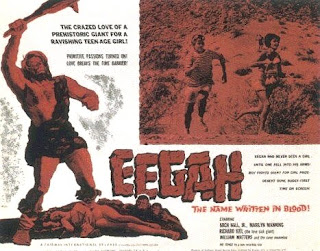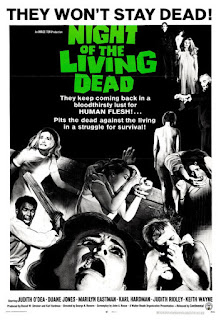The Academy's oversight in not giving this great actress a statuette was remedied in 1994 when she was presented with an honorary Oscar. I can't put it any better than Glenn Close did when she presented Kerr with her long overdue award.
In honor of what would have been her 95th birthday (she passed away in 2007), here are my Top 5 Deborah Kerr pictures:
Black Narcissus (1947)
More than just visual, these colors are used to maximum psychological effect. The deserted palace that these nuns now inhabit seems haunted by the colorful lives that have long since passed. All that is left is the color to coax these sisters from their sheltered lives. Both the cinematography and the sets would win Oscars.
One of the most fascinating aspects of Kerr's screen persona is her "veddy, veddy" British demeanor that at first appears reserved and cautious. But beneath Kerr's blue-green eyes burned desirous passions. This talent of Kerr's found perfect expression as Sister Clodagh, a woman trying to escape a past love by running off to the nunnery- only to find that you can't escape passion. Even in an old convent perched on Himalayan cliffs, love- and madness will find you.
From Here to Eternity (1953)
Even if you haven't seen From Here to Eternity, it's very probable that you've seen Kerr in the movie. The image of Kerr macking Burt Lancaster right into the sand as a wave crashes over them is one of the most iconic in Hollywood history. But there's more to this multi-storied film than just that famous smooch.
The plot takes place on a Hawaiian army base right before the beginning of WWII. Montgomery Clift (Oscar-nommed) is Private Prewitt who likes playing a horn instead of boxing- because you can't blind anyone with a trumpet. But his captain doesn't approve and proceeds to try and make his life hell until he boxes. So the Captain orders Sergeant Warden (Lancaster who was Oscar-nommed too) to crack down on Pru, but what the C.O. doesn't know is Warden is making it with his wife (Kerr) while he's away.
All this abuse drives Pru to the local jukejoint/whorehouse where he falls into the arms of a prostitute (Oscar-winning TV housewife Donna Reed). During one of his visits, his best friend Maggio (Frank Sinatra winning his only Oscar) pisses off Hawaiian-shirted 'Fatso' (Ernest Borgnine in a beastly role that amazingly didn't get a nomination) and keeps paying for it for the rest of the film.
It sounds complicated- and it is- but it works as a sort of male-starring soap opera. Directed by Fred Zinnemann (Yes, another Oscar winner), the film does a great job of portraying the intersection of a group of people who are all dissatisfied with their lives in one way or another- finding in those connections some sort of fulfillment- however short-lived.
Kerr is wonderful as a neglected wife who is forced to choose between an unhappy- but stable marriage and a passionate romance. Joan Crawford was originally considered for the role- but was rejected when she insisted on using her own cameraman. I love my Crawford, but Kerr has an innate soft, damaged quality that really works in the role- earning Kerr her second Oscar nom. Eternity went on to win eight Academy Awards including Best Picture, but Kerr and Lancaster were not among them. As a consolation prize, we will always see them making out on that beach.
The King and I (1956)
A lush Rodgers and Hammerstein score with several indelible songs, gorgeous Thai sets and costumes (both of which won Oscars), Yul Brynner with his shirt off- What's not to love about The King and I?
This musical re-telling of the popular, somewhat true novel Anna and the King of Siam was a smash on Broadway and expectations were high for the film version. Since Yul Brynner had won a Tony for his role as King Mongkut of Siam (I like to call him Mong the Shirtless) he was a shoe-in for the movie.
Sadly, Gertrude Lawrence who won a Tony for her portrayal of Anna died from cancer, so a new Anna had to be found. After seeing her stagework, Brynner suggested Kerr- and while studio execs loved her looks and her acting, they didn't love her singing pipes. So legendary ghost-singer Marni Nixon was called-in to be Kerr's singing voice.
Nixon at a screening of the film talked about Kerr quite fondly, pointing out that most of the time actresses were told not to make it public that they were dubbed. But Kerr proudly announced that the beautiful voice you heard was Nixon's- giving credit where credit was due. That sense of independence and fairness shows in her plucky portrayal of Anna.
K & I is not without its issues. The casting of Russian Brynner and Puerto Rican Rita Moreno as Asians and the "Small House of Uncle Thomas" musical fantasy number are reminders that Hollywood musicals aren't shooting for racial authenticity. Heck! The film is banned in Thailand cause they don't like the portrayal of the king. But with nine Academy award nominations- including five wins (Kerr lost to Ingrid Bergman for Anastasia) this musical is worth some suspension of disbelief.
Tea and Sympathy (1956)
Speaking of stage to screen transfers, Kerr was no slouch on the boards herself. Even after she became a movie star she returned to the theater and in 1953 starred in the controversial Broadway play Tea and Sympathy. The story revolves around a young prep student named Tom (played both on Broadway and in the movie by the unrelated John Kerr) who has trouble at school because- well, he's a big old nelly.
But in the Fifties it wasn't as easy as recording an "It Gets Better" segment or going to your prom with your straight best friend. Openly discussing homosexuality was difficult on stage- and it was verboten on the screen (not to mention in real-life). Many thought the play's touchy subject would make it impossible to be made into a movie. But director Vincente Minnelli and writer Robert Anderson found a way to do it.
In the film, lots of codewords are used to describe Tom- like, "sensitive", "artistic", and "sister boy". All of which mean he does not measure up to the standard of masculinity that society dictates to young men. So Tom gets bullied and ostracized- which distresses Laura (Kerr) the wife of the sports coach. She decides to nurture the boy and provide him a safe haven to read, listen to classical music, and have a soft, feminine shoulder to cry on... and more.
What the film gets wrong by trying to hetero-wash Tom's sexuality and in a changed ending make Laura apologize for trying to "awaken" Tom, it gets right by highlighting that feeling of "otherness."
Minnelli was familiar with how it felt to not match society's definitions of manliness, and he beautifully depicts that yearning to be yourself while at the same time confronting a society that wants you to conform to sexual standards. Cinematically Minnelli creates a space where Tom can be Tom- much like the movies gave Minnelli a place to be an artist. T & S is a relic in how it addresses sexuality, but relics are also reminders of how far we've come- and how far we still have to go.
An Affair to Remember (1957)
I guess you could call it flattery when a Nora Ephron flick references one of your favorite classic romantic movies, bringing it back into the cultural zeitgeist. But I swear if one more person refers to An Affair to Remember as that "movie in Sleepless in Seattle"- there will be blood.
Affair is a re-make of the Charles Boyer/Irene Dunne starrer Love Affair (1939). And when I say re-make I mean it's literally a re-make. Director Leo McCarey who directed both movies saw no reason to change the script from the successful original and made very few changes. What did change was the actors- and while Boyer and Dunne are great- Cary Grant and Kerr are pure movie magic.
Nickie Ferrante (Grant) and Terry McKay (Kerr) meet cute on a transatlantic cruise and while sparks fly, both are in relationships with other people, so shipboard bridge partners are all they can be. But as the ship steams along, so do their feelings for each other, and before long they have fallen madly in love with each other. A trip to Nickie's Grandmere's bucolic Mediterranean home seals the deal and the two promise to meet each other at the top of the Empire State Building in six months if they are able to break-up with their respective partners and start a new life together. I will say no more.
Grant and Kerr have the kind of screen chemistry that legends are made of. The two are equals at witty banter and charm. Both know how to dress impeccably and order the best champagne- and drink it. The way they look at each other seems at once so human and so much more intense than real life. They are an impossible ideal that we nevertheless long for. It's no wonder we tear-up at An Affair to Remember- it's a cinematic impossibility that we wish wasn't so impossible.
No wonder Meg Ryan and Rosie O'Donnell blubbered watching it.



























































